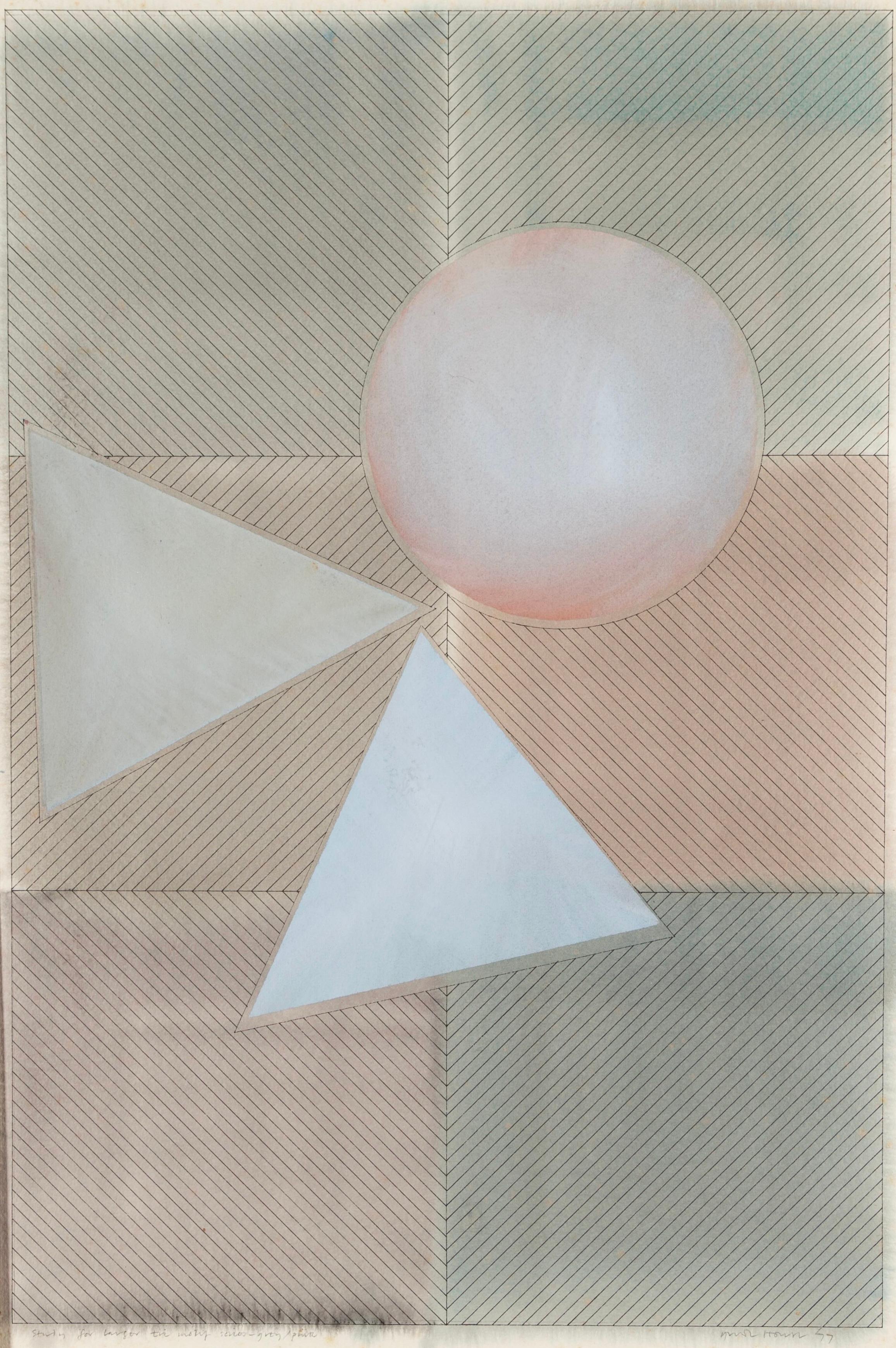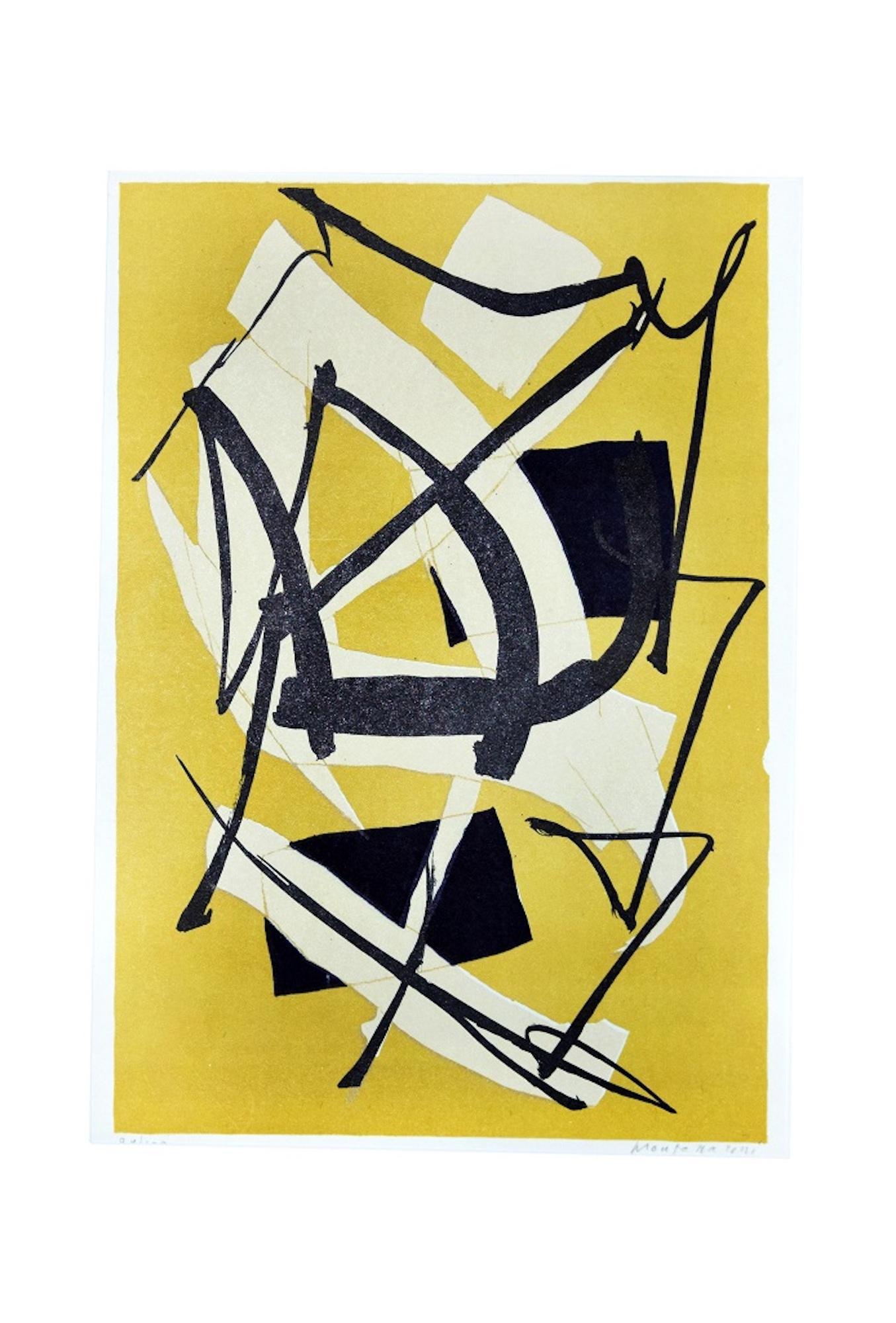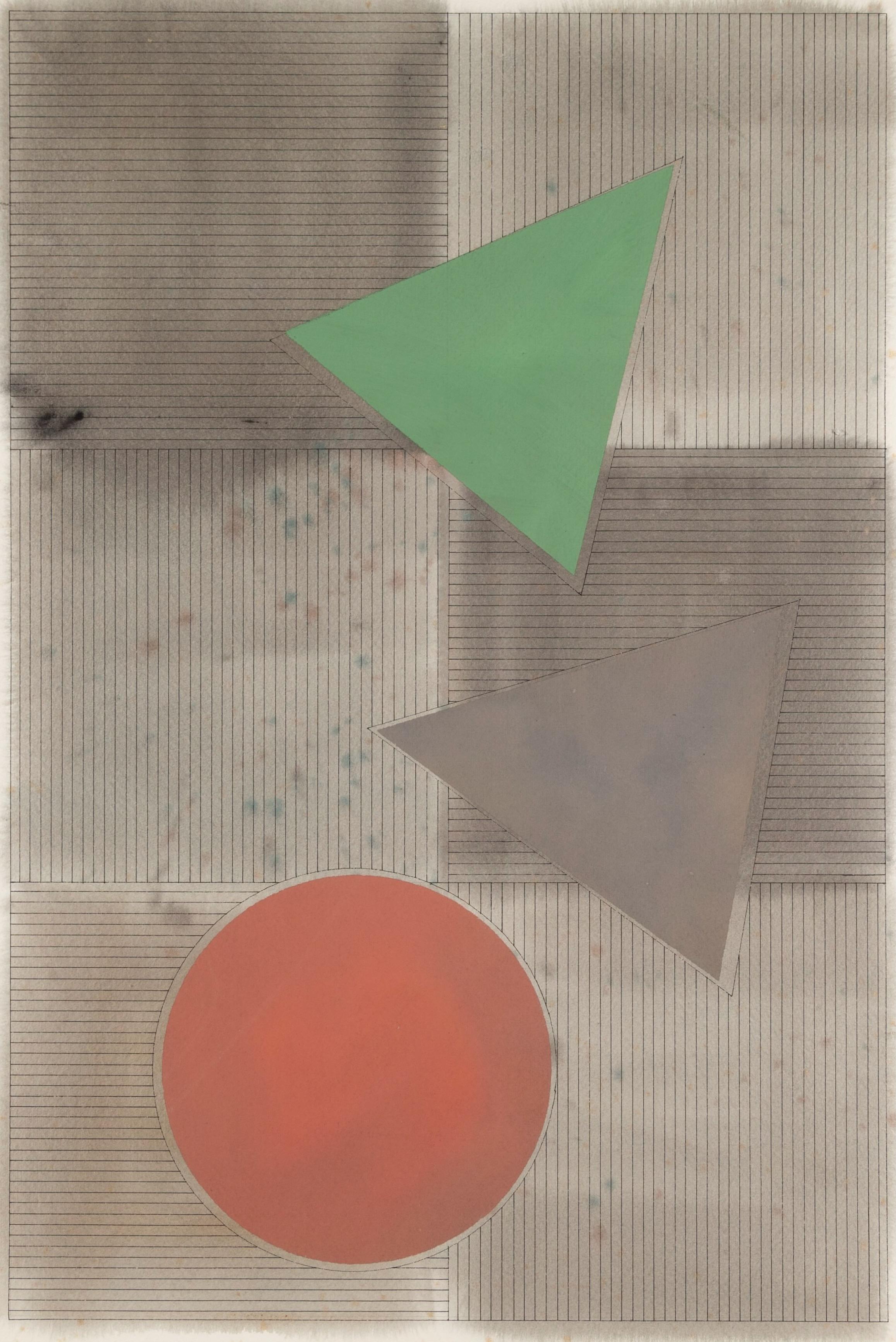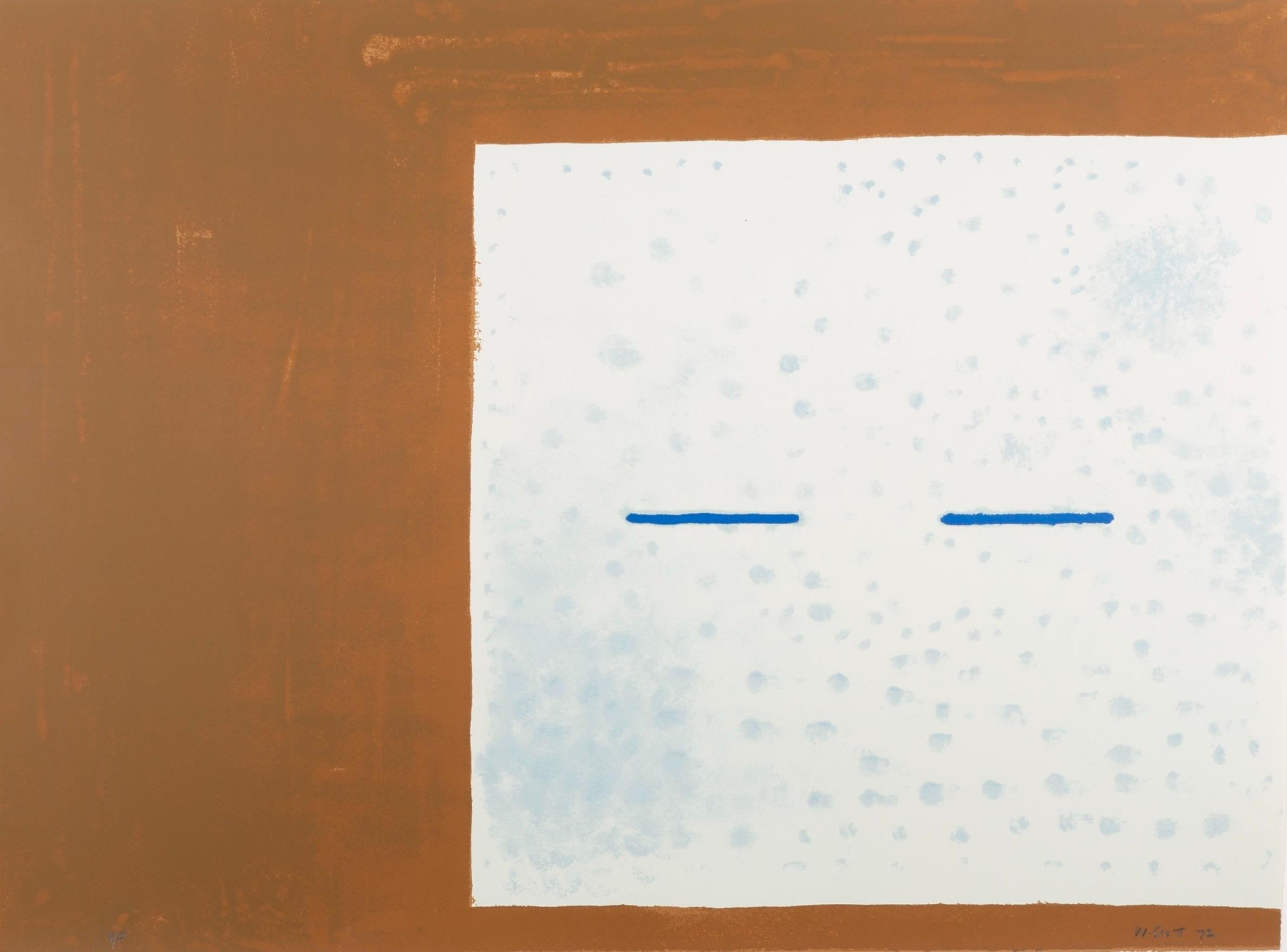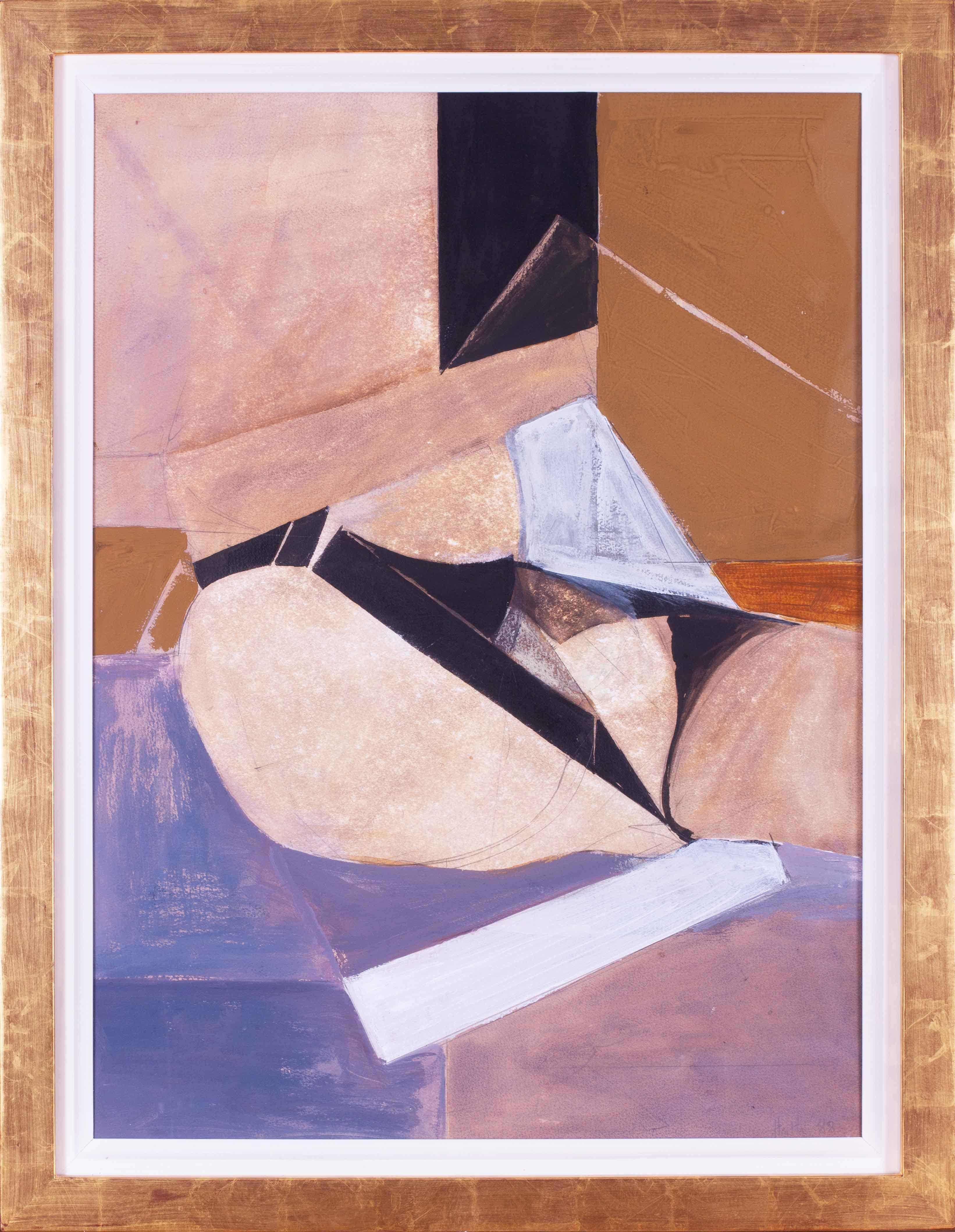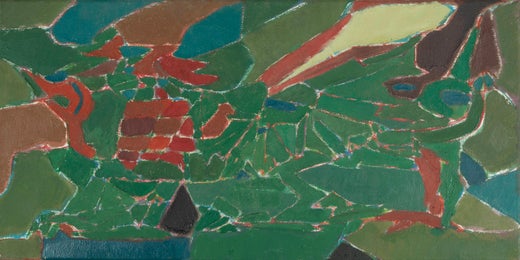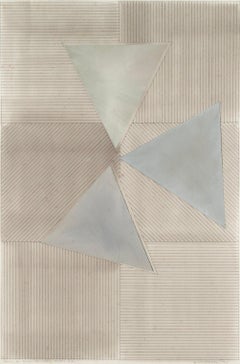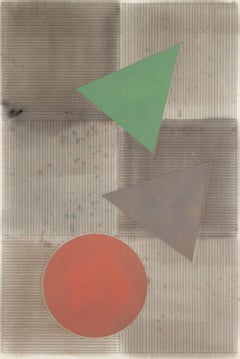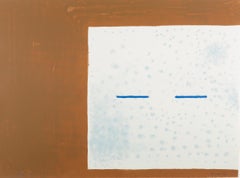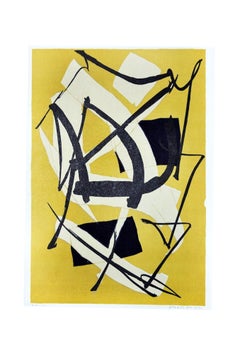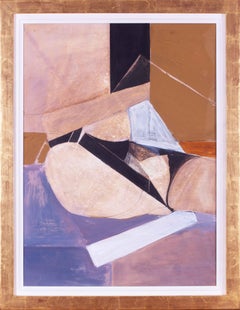Items Similar to Ochre, from Study for Larger Tri Motif Series, 1977 - Pale Colours
Want more images or videos?
Request additional images or videos from the seller
1 of 5
Gordon HouseOchre, from Study for Larger Tri Motif Series, 1977 - Pale Colours1977, circa
1977, circa
$7,502.26
£5,500
€6,388.43
CA$10,336.23
A$11,273.12
CHF 5,971.74
MX$135,148.65
NOK 76,053.38
SEK 69,545.17
DKK 47,727.86
About the Item
Gordon House was born in 1932 in Pontardawe, South Wales. Early exposure to art on trips to the Glynn Vivian Art Gallery as a young boy inspired House towards creative endeavors and at the age of fourteen he was awarded a grant to enter art school which he accepted. From 1947 to 1950 he studied at Luton School of Art, Bedfordshire, and St. Albans School of Art, Hertfordshire. House's contemporaries included Richard Smith and John Plumb with whom he remained close. During the early fifties, after finishing art school, House began work as assistant to the ecclesiastical sculptor Theodore Kern. He also spent time at an advertising studio where he honed his burgeoning skills in typography and graphic design. In 1952 House was offered the position of designer for Imperial Chemical Industries Plastics Division where he stayed until 1959. This was followed by two years spent as graphic designer for the Kynoch Press in London. In 1961 House set out on his own as a self-employed designer and typographer. Initially this was supplemented by part-time teaching at art schools in and around London but by 1964 House was able to devote himself entirely to his design work which freed up valuable time to concentrate on his own artistic output in the studio.
In the late fifties, informed by the new art emerging from America and that of his contemporaries in England, House began to create large-scale abstract works which he was invited to show in 1959 at Dennis Bowen's legendary New Vision Centre in Marble Arch.
House was an active participant in the vibrant London art scene of the sixties, regularly attending lectures, exhibitions and discussions. In 1960 he exhibited in 'Situation' the key abstract exhibition of the decade held at the RBA Galleries. Other participating artists included Robyn Denny, Bernard and Harold Cohen, Gillian Ayres, John Hoyland, Richard Smith and William Turnbull among others. These artists, united by a common admiration for American Abstract Expressionism, were frustrated by the lack of exposure given to large-scale abstract works in commercial galleries so they organised their own exhibition. The name was derived from the participants' idea that an abstract painting that occupied the whole field of vision would involve the spectator in an 'event' or 'situation'. This exhibition was followed by 'New London Situation' in 1961 and a nationwide touring Arts Council presentation in recognition of the significance of the two earlier shows.
In 1961 House began producing his first prints at the Kelpra Studio, run by Chris and Rose Prater, where he made the earliest fine art screenprint ever to be produced in Britain. Artists such as Paolozzi and Hamilton followed in his footsteps and together they started a printmaking revolution in Britain. They cemented the medium of the screenprint in the world of fine art as opposed to the commercial sphere and secured the reputation of Kelpra in the process. Later, together with Cliff White, House set up the White Ink (Ltd.) print studio in London, where he produced etchings and wood engravings on a series of magnificent antique printing presses he had collected. White Ink soon gained a reputation for innovative and high quality printmaking, attracting artists such as R. B. Kitaj, Richard Smith, Joe Tilson, Sidney Nolan, Victor Pasmore, Eduardo Paolozzi, Bernard Cohen and Elizabeth Frink.
Printmaking was to remain a key part of House's oeuvre throughout the rest of his career, whether in the medium of screenprint, etching, woodcut, linocut or lithograph. In 1981 a retrospective exhibition of his graphic works opened at the Carnegie Institute, Pittsburgh, and in 1982 this travelled to the Brooklyn Museum, New York. These shows were instrumental in bringing House's prints to the attention of a wider American audience.
- Creator:Gordon House (1932, British)
- Creation Year:1977, circa
- Dimensions:Height: 30.01 in (76.2 cm)Width: 22.49 in (57.1 cm)
- Medium:
- Period:
- Condition:
- Gallery Location:Kingsclere, GB
- Reference Number:1stDibs: LU2718215372952
Gordon House
The Guardian wrote of Gordon House, upon his death in 2004: Many of the works made during his last years by the painter and graphic designer Gordon House, who has died aged 71, referred back to his birthplace in the Swansea valley. He spent his earliest years in the steel town of Pontardawe. In Tin-pan Valley, the memoir he published earlier this year, he recalled "the clamour of steel mills ... the tinplate works and pithead gear" and "dynamite blasting as coal seams were struck higher up the valley". Unemployment and the depression of the 1930s led Gordon's parents to take him from the valleys of south Wales to the order and designed coherence of Letchworth, "Hertfordshire's first garden city". After leaving school at 14, he went to study, first, at Luton School of Art. For a while after that, he worked in a hospital, before, with the aid of a scholarship, moving on to St Albans School of Art. By 1961, Gordon had become established among a new generation of artists as an independently minded and adventurous painter and designer. The previous year, he had shown his large, bold, hard-edged canvasses at the important London "Situation" exhibition of large-scale abstract painting, and had designed the catalogue for that exhibition. As the 1960s moved on, Gordon designed for the pop world. He worked for the Beatles, designing their White album and the back of the Sergeant Pepper album, for which his longtime friend Peter Blake designed the front. Later, he designed Wings' first album. He delighted in the creative energy of others, and so could respond to the talents of musicians and artists alike. Gordon made paintings throughout his life as a designer. During the 1960s and 70s, his canvasses and prints reflected the dramatic tensions of his graphic design; by the 1980s, Wales had become his constant subject matter. The surface, texture and colour of his paintings softened. No doubt, he needed to pay homage to the places and the people who had shaped him, just as he always paid homage to the artists for whom he designed. His canvasses reduced in size, becoming palm-of-the-hand landscapes. He spent much time in Wales and, in his final years, he used his brush to walk a path through memories of collieries, valleys, smoking stacks, rows of cottages and the people who had first nurtured him.
About the Seller
No Reviews Yet
Vetted Professional Seller
Every seller passes strict standards for authenticity and reliability
Established in 2010
1stDibs seller since 2024
44 sales on 1stDibs
Typical response time: 7 hours
- ShippingRetrieving quote...Shipping from: Kingsclere, United Kingdom
- Return Policy
More From This Seller
View AllGrey, from Study for Larger Tri Motif Series, c. 1977 - Gouache and Watercolour
By Gordon House
Located in Kingsclere, GB
Gordon House was born in 1932 in Pontardawe, South Wales. Early exposure to art on trips to the Glynn Vivian Art Gallery as a young boy inspired House towards creative endeavors and at the age of fourteen he was awarded a grant to enter art school which he accepted. From 1947 to 1950 he studied at Luton School of Art, Bedfordshire, and St. Albans School of Art, Hertfordshire. House's contemporaries included Richard Smith and John Plumb with whom he remained close. During the early fifties, after finishing art school, House began work as assistant to the ecclesiastical sculptor Theodore Kern. He also spent time at an advertising studio where he honed his burgeoning skills in typography and graphic design. In 1952 House was offered the position of designer for Imperial Chemical Industries Plastics Division where he stayed until 1959. This was followed by two years spent as graphic designer for the Kynoch Press in London. In 1961 House set out on his own as a self-employed designer and typographer. Initially this was supplemented by part-time teaching at art schools in and around London but by 1964 House was able to devote himself entirely to his design work which freed up valuable time to concentrate on his own artistic output in the studio.
In the late fifties, informed by the new art emerging from America and that of his contemporaries in England, House began to create large-scale abstract works which he was invited to show in 1959 at Dennis Bowen's legendary New Vision Centre in Marble Arch.
House was an active participant in the vibrant London art scene of the sixties, regularly attending lectures, exhibitions and discussions. In 1960 he exhibited in 'Situation' the key abstract exhibition of the decade held at the RBA Galleries. Other participating artists included Robyn Denny, Bernard and Harold Cohen, Gillian Ayres, John Hoyland, Richard Smith and William Turnbull among others. These artists, united by a common admiration for American Abstract Expressionism, were frustrated by the lack of exposure given to large-scale abstract works in commercial galleries so they organised their own exhibition. The name was derived from the participants' idea that an abstract painting that occupied the whole field of vision would involve the spectator in an 'event' or 'situation'. This exhibition was followed by 'New London Situation' in 1961 and a nationwide touring Arts Council presentation in recognition of the significance of the two earlier shows.
In 1961 House began producing his first prints at the Kelpra Studio, run by Chris and Rose Prater, where he made the earliest fine art screenprint ever to be produced in Britain. Artists such as Paolozzi and Hamilton followed in his footsteps and together they started a printmaking revolution in Britain. They cemented the medium of the screenprint in the world of fine art as opposed to the commercial sphere and secured the reputation of Kelpra in the process. Later, together with Cliff White, House set up the White Ink (Ltd.) print studio in London, where he produced etchings and wood engravings on a series of magnificent antique printing presses...
Category
20th Century Paintings
Materials
Ink, Watercolor, Gouache
Grey/Pink, from Study for Larger Tri Motif Series, 1977 - Gouache, Watercolour
By Gordon House
Located in Kingsclere, GB
Gordon House was born in 1932 in Pontardawe, South Wales. Early exposure to art on trips to the Glynn Vivian Art Gallery as a young boy inspired House towards creative endeavors and ...
Category
20th Century Abstract Paintings
Materials
Ink, Watercolor, Gouache
Red/Green, from Study for Larger Tri Motif Series, 1977 - Gouache, Watercolour
By Gordon House
Located in Kingsclere, GB
Gordon House was born in 1932 in Pontardawe, South Wales. Early exposure to art on trips to the Glynn Vivian Art Gallery as a young boy inspired House towards creative endeavors and at the age of fourteen he was awarded a grant to enter art school which he accepted. From 1947 to 1950 he studied at Luton School of Art, Bedfordshire, and St. Albans School of Art, Hertfordshire. House's contemporaries included Richard Smith and John Plumb with whom he remained close. During the early fifties, after finishing art school, House began work as assistant to the ecclesiastical sculptor Theodore Kern. He also spent time at an advertising studio where he honed his burgeoning skills in typography and graphic design. In 1952 House was offered the position of designer for Imperial Chemical Industries Plastics Division where he stayed until 1959. This was followed by two years spent as graphic designer for the Kynoch Press in London. In 1961 House set out on his own as a self-employed designer and typographer. Initially this was supplemented by part-time teaching at art schools in and around London but by 1964 House was able to devote himself entirely to his design work which freed up valuable time to concentrate on his own artistic output in the studio.
In the late fifties, informed by the new art emerging from America and that of his contemporaries in England, House began to create large-scale abstract works which he was invited to show in 1959 at Dennis Bowen's legendary New Vision Centre in Marble Arch.
House was an active participant in the vibrant London art scene of the sixties, regularly attending lectures, exhibitions and discussions. In 1960 he exhibited in 'Situation' the key abstract exhibition of the decade held at the RBA Galleries. Other participating artists included Robyn Denny, Bernard and Harold Cohen, Gillian Ayres, John Hoyland, Richard Smith and William Turnbull among others. These artists, united by a common admiration for American Abstract Expressionism, were frustrated by the lack of exposure given to large-scale abstract works in commercial galleries so they organised their own exhibition. The name was derived from the participants' idea that an abstract painting that occupied the whole field of vision would involve the spectator in an 'event' or 'situation'. This exhibition was followed by 'New London Situation' in 1961 and a nationwide touring Arts Council presentation in recognition of the significance of the two earlier shows.
In 1961 House began producing his first prints at the Kelpra Studio, run by Chris and Rose Prater, where he made the earliest fine art screenprint ever to be produced in Britain. Artists such as Paolozzi and Hamilton followed in his footsteps and together they started a printmaking revolution in Britain. They cemented the medium of the screenprint in the world of fine art as opposed to the commercial sphere and secured the reputation of Kelpra in the process. Later, together with Cliff White, House set up the White Ink (Ltd.) print studio in London, where he produced etchings and wood engravings on a series of magnificent antique printing presses...
Category
20th Century Abstract Paintings
Materials
Ink, Watercolor, Gouache
Areas Contrasted, from A Poem for Alexander, Brown and White Abstract Print 1972
By William Scott
Located in Kingsclere, GB
Areas Contrasted, from A Poem for Alexander by William Scott, 1972
Additional information:
Medium: screenprint
56.9 x 77.5 cm
22 3/8 x 30 1/2 in
signed, dated and inscribed A/P in p...
Category
20th Century Abstract Prints
Materials
Screen
Brown Abstract, Oil on Canvas Painting by John Armstrong, 1965
By John Armstrong
Located in Kingsclere, GB
Brown Abstract (6), Oil on Canvas Painting by John Armstrong 1893-1973, 1965
Literature/Press
Andrew Lambirth, 'John Armstrong: The Complete Paintings, Catalogue Raisonne', London: ...
Category
20th Century Abstract Paintings
Materials
Canvas, Oil
Untitled I, from Waddington Suite by Robyn Denny, 1968-9
By Robyn Denny
Located in Kingsclere, GB
Untitled I, from Waddington Suite by Robyn Denny, 1968-9
Additional information:
Medium: screenprint
61 x 53.4 cm
24 1/8 x 21 1/8 in
signed and numbered 71/75 in pencil
Robyn Denny...
Category
21st Century and Contemporary Abstract Prints
Materials
Screen
You May Also Like
Ochre Composition - creen Print by Luigi Montanarini - 1970s
By Luigi Montanarini
Located in Roma, IT
Ochre Composition is an original artwork realized by Luigi Montanarini in the 1970s.
Original colored serigraph on paper. Hand signed by the artist on the lower left. Numbered on lo...
Category
1970s Contemporary Abstract Prints
Materials
Screen
Adrian Heath, British, mid 20th Century abstract in golds and browns
By Adrian Heath, 1920-1992
Located in Petworth, West Sussex
Adrian Heath (British, 1920 - 1992)
Golden Brown
Mixed media
signed ‘Heath 88’ (lower right)
73 x 54 cm.
Adrian Heath (1920–1992) was a 20th-century British painter.
Heath was born in Burma and attended Bryanston School in Dorset, southern England. In 1938, he studied art under Stanhope Forbes at Newlyn. In 1939 and 1945–47, he attended the Slade School of Art. He served in the RAF as a tail gunner in Lancaster bombers in World War II, but spent almost the entire war as a prisoner of war at Stalag 383. During this period he became friends with and taught fellow POW Terry Frost to paint.
In 1949 and 1951, he visited St Ives, Cornwall, where he met Ben Nicholson. In the early 1950s, he was also associated with Victor Pasmore and Anthony Hill. As such he became the main link between the emerging St Ives School and British Constructivism. He was also influenced by D'Arcy Thompson. In 1953 Heath published 'Abstract Painting: its Origins and Meaning' a slim but perceptive volume appraising the development of abstraction by the early moderns.
He exhibited at the Musée Carcassonne in 1948, and at the Redfern Gallery...
Category
20th Century Abstract Mixed Media
Materials
Mixed Media
White - Acrylic Painting by Mario Padovan - 1976
By Mario Padovan
Located in Roma, IT
White is an contemporary artwork realized by Mario Padovan in 1976.
Mixed colored acrylic painting on canvas.
Signature, title, date and technique on the back.
Category
1970s Modern Abstract Paintings
Materials
Acrylic
$1,724 Sale Price
20% Off
Half Circles in Ochre and Grey no. 1
By Ryan Snow
Located in Napa, CA
Earth pigment on raw canvas poplar wood frame
Ryan Snow is an environmental artist creating visual meditations through abstract painting, analog photography...
Category
21st Century and Contemporary Abstract Abstract Paintings
Materials
Canvas, Pigment
Such, Alike - Original Minimalist Textured Abstract Painting on Canvas
Located in Manchester, GB
Henry Woolway, Such, Alike, 2025
Overlapping acrylic dyed canvas with frayed edges
64 x 94.5 cm (25.19 x 37.2 in)
Artwork is hand-framed in a tray frame
Hand-signed by the artist on...
Category
2010s Abstract Abstract Paintings
Materials
Canvas, Acrylic
Minimal Geometric Abstract Mixed-Media Composition in Neutrals by Blanca Nieto
Located in Barcelona, Barcelona
At Escat Gallery we are committed to maintaining the highest standards of trust and professionalism for our collectors. Every artwork in our collection comes with a Certificate of Au...
Category
2010s Abstract Abstract Paintings
Materials
Silk, Cord, Pigment

